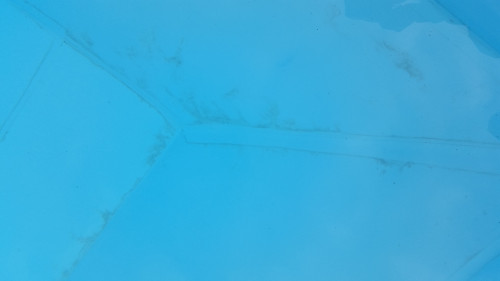As discussed above, a good balance is paramount for the swimming pool’s water.
If this balance is not followed, the water may become aggressive and attack all of the items it comes into contact with, including the coating.
Example of water analysis results:
Water balance
Values obtained
Ideal values
pH
6.8
7.2
unit
Methyl-orange alkalinity
58
250
mg/l of CaCO3
Hardness
200
200
mg/l of CaCO3
Impact on the water balance:
The water is not balanced; it falls in the aggressive category. Indeed the alkalinity (methyl-orange alkalinity) and the pH are too low and the hardness is too high.
We advise you to regularly check your pH and to keep it close to 7.2.
The methyl-orange alkalinity must be around 25°f (French degrees) in order to avoid abrupt variations in the pH.
The hardness must be around 20°f (1°f = 10mg/l of CaCO3).
Swimming pool water balance diagram
[caption id="attachment_9097" align="aligncenter" width="674"] Swimming pool water balance diagram[/caption]
Swimming pool water balance diagram[/caption]
Damage caused by this water
Corrosion of the coating is due to “aggressive” water caused by an imbalance linked to a pH level that is lower than the balanced pH.
When the pH is too low, the water is aggressive. It dissolves the mineral loads contained in the coatings (as found in liners). These loads consist of chalk or calcium carbonate and their proportions may be quite considerable, depending on the type of liner.
Instead of the chalk, what is left are holes which get filled with water, as occurs with any soft, porous materials.
The temperature is also a parameter that accelerates this phenomenon, because it dilates the materials, thereby facilitating the entry of water into the pores.
In our case, the water’s balanced pH level is 7.8. Therefore it will dissolve the calcium carbonate if its pH is lower than this value.
In terms of swimming pool water, the balanced pH level is the most important factor, Even if swimming pools are generally filled with quite balanced water from the general network (with the pH value being close to a balanced pH level), it is OBLIGATORY to REGULARLY check the pH in order to keep it close to the balanced pH level.
In our case, in water with a pH of 6.8 (which is substantially lower than 7.8), this phenomenon will be accentuated.
Under these conditions, very aggressive water will either create pores or the coating’s pigmentation will be attacked. Consequently, the watertightness, sturdiness and aesthetic appearance will be greatly changed.


Leave a comment